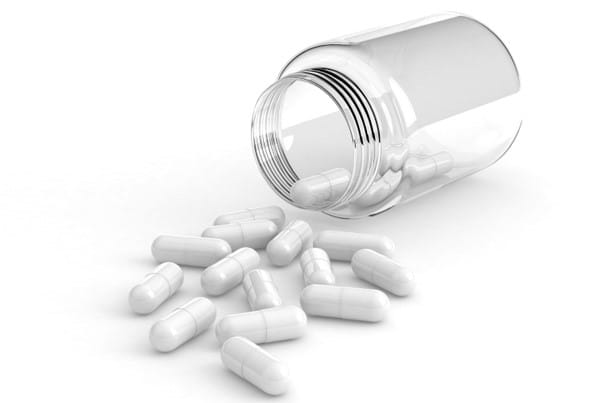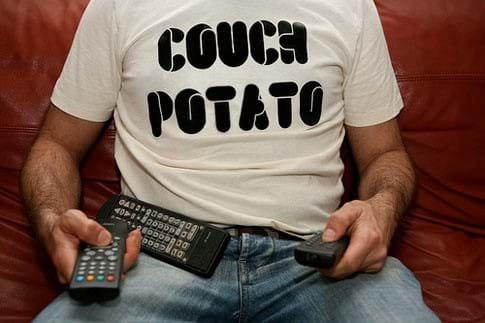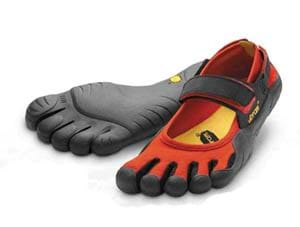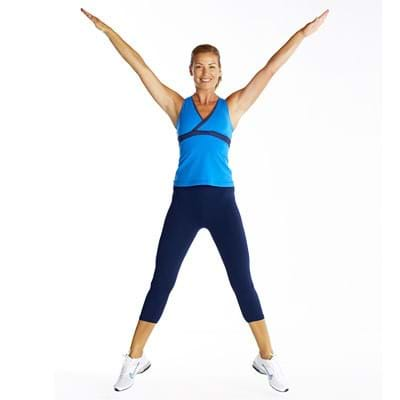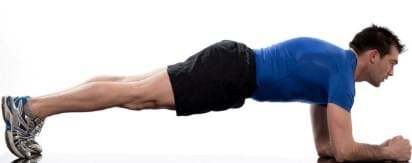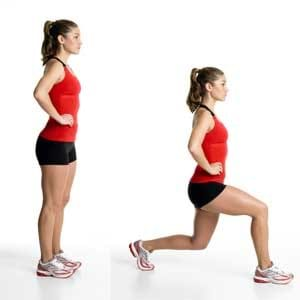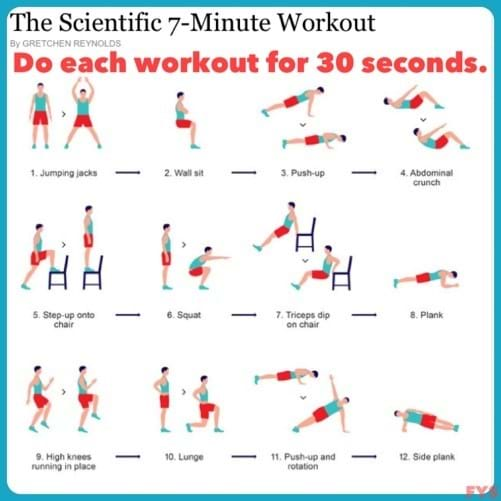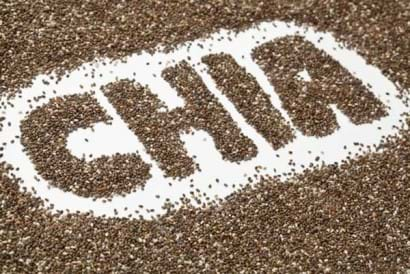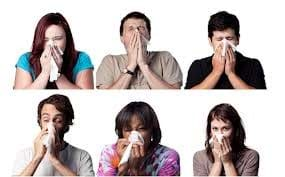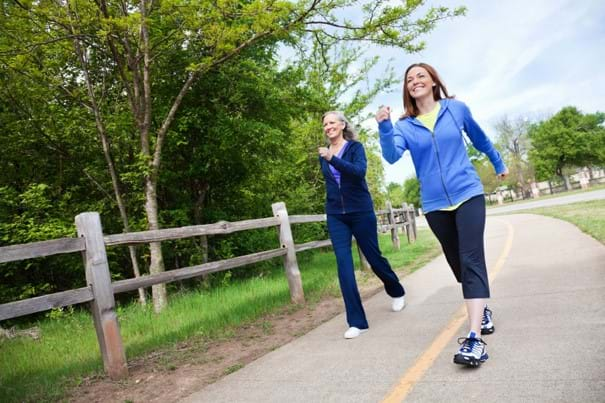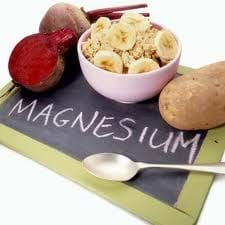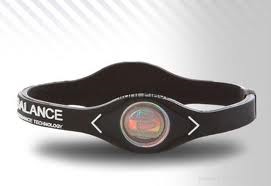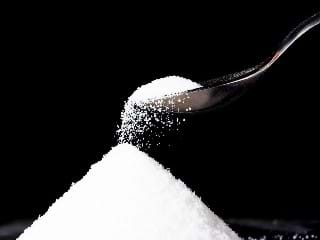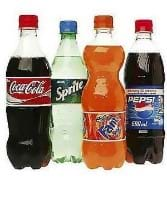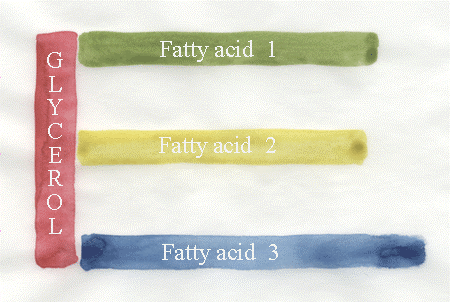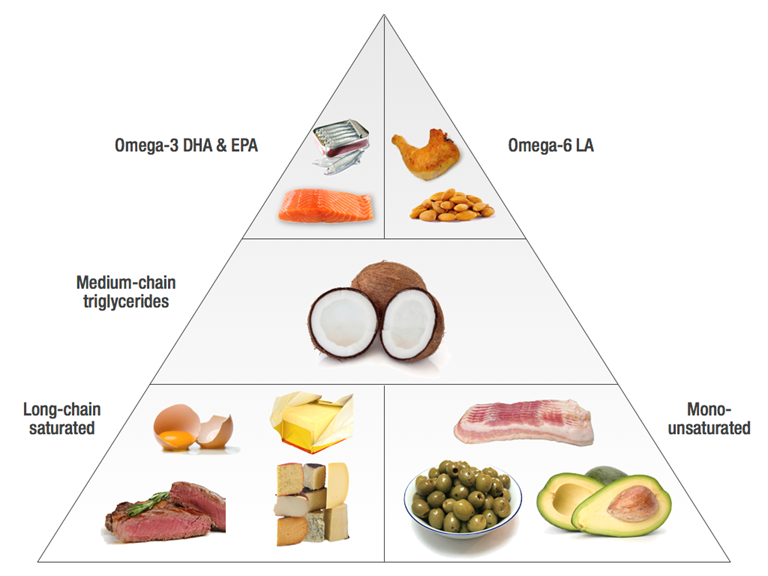Anti-inflammatories and Heart Disease Side Effects
A study published in PLOS Medicine recently suggests that the use of some non-steroidal anti inflammatory drugs (NSAIDs) may cause an elevated risk of cardiovascular disease:
Cardiovascular Risk with Non-Steroidal Anti-Inflammatory Drugs: Systematic Review of Population-Based Controlled Observational Studies
The article summary can be viewed here:
http://www.plosmedicine.org/article/info%3Adoi%2F10.1371%2Fjournal.pmed.1001098#abstract2
The study highlighted that the greatest risk occurred with the use of Diclofenac (eg Voltaren) and Celecoxib (eg Celebrex) NSAIDs. Voltaren, even at non-prescription dosages was linked to elevated cardiovascular risks.
Although Ibuprofen (Nurofen) at low doses was considered safe, it did produce an increased risk at higher dosages.
Chiropractic Solutions Comments:
Chiropractors take a drug-free approach to health care whenever possible.
Our recommendation has always been to ensure early application of ice-packs to a recent injury. Ice is a powerful anti-inflammatory and when used early after an injury is very effective at minimising the development of tissue damage – without the harmful side-effects that we read about in this article.
For those with more chronic (long-term) injuries and using long-term anti-inflammatories, consider a combination of:
· regular chiropractic adjustments to maintain joint mobility
· keeping mobile with regular light exercise,
· and a combination of heat and ice applications when needed (speak to your chiropractor for advice on when you should use heat vs ice)
Anti-inflammatories generic and common names:
Ibuprofen – Nurofen
Naproxen – Naprosyn
Rofecoxib – Vioxx
Celecoxib – Celebrex
Diclofenac - Voltaren
Indomethacin – Indocid
Are you a Couch Potato?
Couch Potato Lifestyle Conservatively Estimated to Kill 5 Million People Per Year
The medical journal The Lancet has just published a study exposing the estimated death toll of being a couch potato. Unsurprisingly, the sedentary lifestyle typical of many developed nations has been found to be only marginally less harmful than smoking.
Conservative estimates of deaths attributed to a lack of physical activity come in around 5 million per year, worldwide.
The statistics are worrying for individuals aged 15 and over, with around 1/3 not getting the recommended amount of exercise (about 2.5 hours per week), while a shocking 80% of children aged 13-15 fail to meet these specifications.
Have a look at the ABC's article summarizing the findings at this link:
http://www.abc.net.au/news/2012-07-18/inactivity-kills-5m-per-year/4137902
and then get out from behind your computer and MOVE!
Barefoot Running
Is it time to set your piggies free?
Perhaps you've heard some of the hype surrounding the "barefoot running" movement and are wondering what the deal is. Recent research has been examining the usefulness of conventional running shoes and some of the results are interesting to say the least. One study showed that running shoes not only increased certain stresses to lower extremity joints more than barefoot running, but also increased the same stresses more than walking in high heels. A summary of these findings can be read here: http://www.sciencedaily.com/releases/2010/01/100104122310.htm
If you are considering a move to minimalist or barefoot running, remember that your feet have grown quite used to the support provided by conventional shoes as well as the heel-striking gait they encourage. Consult your doctor of Chiropractic before making the shift to barefoot running so that they might establish whether this would be a suitable change. You will also need some briefing on forefoot striking gait as well as some extra exercises to help improve the strength of your intrinsic foot muscles. Both of these preparatory steps will help to ease what can often be a tricky transition.
You might also find that you require some additional attention for the joints and muscles of your lower limb. Be sure to raise this with your chiropractor, but don't forget to book an extended consult so you can receive the appropriate attention for these additional queries
"But I just don't have time"
Although excuses for not exercising are many and varied, "but I just don't have time" is the number one battle cry of the time-poor.
Practitioners often lament the inability to add another hour to a person's day so that they might be able to devote some time to improving their overall health through exercise.
A recent publication in the May-June issue of the American College of Sports Medicine's Health and Fitness journal suggests that given the sometimes extreme demands of life in the developed world, people have lost the ability to manage and expand physical energy and therefore succumb to a cycle of mental, emotional and physical fatigue which has long-term implications on their overall health and happiness. It goes on to say that regular aerobic and resistance training can help combat this problem.
Again, the problem of time rears its ugly head. The good news is that the researchers who wrote the article found that by performing 12 exercises over 7 minutes, which utilize only body weight, a chair and a wall, one can achieve a similar fitness effect to the combination of a long run and a visit to the weight room. The program can be modified for different abilities and can be performed two or three times in succession if desired.
Have a look at the following article from the New York Times with a link to the full text journal paper.
It’s tantalising in its simplicity!
While you read it, consider that you would be able to get a full workout in that same time!
http://well.blogs.nytimes.com/2013/05/09/the-scientific-7-minute-workout/
Further research has suggested that fitness gains can be achieved through a mere 4 minutes of intense activity (ie having the heart rate at 90% of maximum). The link below provides an overview.
http://well.blogs.nytimes.com/2013/06/19/the-4-minute-workout/
As always, be sure to consult your chiropractor or other health practitioner before commencing a new exercise program to ensure it is appropriate for you.
And for a sneak peek at the 12 simple exercises, see below….
H2 dolor sit amet
Incididunt ut labore et dolore magna aliqua consectetur adipisicing elit, sed do eiusmod tempor. Ut enim ad minim veniam, quis nostrud exercitation ullamco laboris nisi ut aliquip ex ea commodo consequat. Integer pellentesque turpis sit amet purus feugiat auctor. Cras in metus sed justo eleifend porta. Sed consectetur dui erat, et aliquam erat aliquam vitae. Etiam iaculis, sapien in posuere varius, ante nunc consectetur tortor, non tempus mauris risus ac neque. Fusce venenatis elit ut sapien bibendum vestibulum. Nam sapien arcu, interdum vel consequat vitae, adipiscing vitae ligula. Integer posuere, tortor in consectetur congue, risus ipsum interdum ante, sed porttitor erat dui id diam. Donec ut mi pellentesque, imperdiet sapien sed, egestas ante. Reprehenderit in voluptate duis aute irure dolor in dolore eu fugiat nulla pariatur velit esse cillum.
H2 dolor sit amet
Incididunt ut labore et dolore magna aliqua consectetur adipisicing elit, sed do eiusmod tempor. Ut enim ad minim veniam, quis nostrud exercitation ullamco laboris nisi ut aliquip ex ea commodo consequat. Integer pellentesque turpis sit amet purus feugiat auctor. Cras in metus sed justo eleifend porta. Sed consectetur dui erat, et aliquam erat aliquam vitae. Etiam iaculis, sapien in posuere varius, ante nunc consectetur tortor, non tempus mauris risus ac neque. Fusce venenatis elit ut sapien bibendum vestibulum. Nam sapien arcu, interdum vel consequat vitae, adipiscing vitae ligula. Integer posuere, tortor in consectetur congue, risus ipsum interdum ante, sed porttitor erat dui id diam. Donec ut mi pellentesque, imperdiet sapien sed, egestas ante. Reprehenderit in voluptate duis aute irure dolor in dolore eu fugiat nulla pariatur velit esse cillum.
H2 dolor sit amet
Incididunt ut labore et dolore magna aliqua consectetur adipisicing elit, sed do eiusmod tempor. Ut enim ad minim veniam, quis nostrud exercitation ullamco laboris nisi ut aliquip ex ea commodo consequat. Integer pellentesque turpis sit amet purus feugiat auctor. Cras in metus sed justo eleifend porta. Sed consectetur dui erat, et aliquam erat aliquam vitae. Etiam iaculis, sapien in posuere varius, ante nunc consectetur tortor, non tempus mauris risus ac neque. Fusce venenatis elit ut sapien bibendum vestibulum. Nam sapien arcu, interdum vel consequat vitae, adipiscing vitae ligula. Integer posuere, tortor in consectetur congue, risus ipsum interdum ante, sed porttitor erat dui id diam. Donec ut mi pellentesque, imperdiet sapien sed, egestas ante. Reprehenderit in voluptate duis aute irure dolor in dolore eu fugiat nulla pariatur velit esse cillum.
H2 dolor sit amet
Chiropractic Solutions Notes:
You can easily turn this into a 12 minute exercise regime by making each exercise 45 seconds with a 15 second rest, rather than 30 seconds with a 10 second rest. The last exercise is done for 30 second each side to make it a perfect 12 minutes!
This is a brilliant idea to take with you on holidays to maintain a bit of fitness while you indulge a little in feasting and frivolities!
All you need is a wall, a chair and the floor and this handy little sheet printed from your computer.
Chia - The Amazing Superfood
Sustaining a healthy lifestyle is often a challenging feat. Since most convenience foods seem to typify the antithesis of health, extra effort is required to strategically map out nutritionally-rich preparations that fit within our busy lifestyles.
Seeking out nutritionally-dense ‘superfoods’ aids in simplifying the quest towards optimum health. It alleviates some of the strain involved in trying to consume considerable amounts of salubrious nourishment, often not readily available on-the-go.
One such ‘superfood’ is the Chia seed, which packs a punch so strong that it is virtually unmatched in its nutritional profile.
Chia (salvia hispanica L) is a tiny little seed that is packed full of goodness! It is a gluten free wholegrain, in fact, the only wholegrain that you can eat raw, exactly as it comes from the plant. It looks much like a poppy seed, and comes in black & white. Despite the colour variations, they are nutritionally very similar.
Chia seeds are a natural source of Essential Fatty Acids (Omega 3 & 6), soluble and insoluble fibre, antioxidants, protein & essential minerals (calcium, zinc, iron, phosphorus, magnesium, manganese, copper and potassium) as well as vitamins A, B & E.
Rarely for a vegetarian source of protein, the Chia seed is complete with all 8 essential amino acids. They are also a great source of antioxidants, assisting in the proper function of bodily organs and tissues and protect against cancer and cardiovascular disease through the removal of damaging free radicals.
Difficulty maintaining bowel regularity? Chia is known for its easy digestibility. Each seed is coated with soluble fibre, which aids in the gelling action, maintaining healthy digestion and assimilation of nutrients.
Absorbing more than seven times its weight when placed in water, Chia seeds form a gel that, when eaten, produces a physical barrier between carbohydrates and digestive enzymes in the stomach. This process effectively aids in the regulation of blood sugar levels.
The exterior of the seed is protected by insoluble fibre, which helps keep food moving smoothly through the digestive process.
How do I use Chia?
When including Chia seeds in your diet remember that EFA’s (Essential Fatty Acids) are destroyed by heat. Many of the other health benefits will remain once heated but the EFA’s are gone. For the optimum health benefits of Chia - RAW is best.
Luckily, Chia seeds generally do not have a taste and when mixed with other foods , it does not change the flavour at all.
Chia seeds can be found at good quality health food shops. Here are some easy ways to incorporate Chia seeds into your diet.
· § Mix in through yoghurt
· § Sprinkle it on salads
· § Stir it through juice
· § Add it to your cereal
· § Add it to icecream
· § Add it to a fruit salad
· § Put a tablespoon in a smoothie
· § Sprinkle it on top of the icing of a cake
So what are you waiting for ? Get your "Chia Head" on and go get some!
Cold and Flu vs Your Immunity
The Cold and Flu season is fast approaching and some of us have already succumbed to becoming ill.
Patients often ask us…
“What is the best pill or supplement I can take so I don’t get sick?”
Perhaps a better strategy is to ask…
“What is taxing my immune system and what can I do to keep it strong?”
There are times when we just can’t let the world go by while we rest and recover, and if that’s you – the best strategy is a strong immune system!
So what is the difference between the Common Cold and The Flu?
Why is it that some people get sick and others do not?
9 ways to Build a Strong Immune System and KICK a Colds Butt Before It Kicks Yours!
What is the difference between the Common Cold and The Flu?
The ‘Flu’ and a ‘Cold’ are NOT synonymous terms! People will often call a severe common cold, ‘The Flu’, when they are quite different illnesses. Understanding the differences and how you contract them will help you in your quest to prevent yourself succumbing to either a cold or flu and what is the best way to help your body deal with them and recover rapidly.
The ‘Common Cold’ is a group of symptoms in the upper respiratory tract caused by a virus (commonly, a strain of the Rhinovirus). Symptoms of a cold may include coughing, sneezing or sniffling, a runny or stuffy nose, mild throat irritation, mild fever and mild body aches.
‘The Flu’ is caused by one of many strands of the Influenza virus. The Flu is more serious illness. Symptoms of the flu usually start suddenly with a high fever and may include dry cough, shivering, sweating and severe whole muscle aches.
Why do some people get sick and others do not?
If you’re one of the many thousands of people who get sick without fail, every Autumn and Winter, then this article is for you!
Getting sick is not an inevitable part of the change in seasons. You surely know of a handful of people who almost never get sick? Maybe people you work with, or others in your home. These people are able to avoid illness not because they aren’t exposed to germs, but because their immune system is strong enough to keep them healthy.
You don’t get sick just because you’re exposed to germs!
(and why you shouldn’t blame the lady in the supermarket line who coughed
in your direction for making you sick!)
There is a common misconception that if you get the Flu, you were exposed to the virus, whereas if your colleague across the petition in the office does not get sick, he wasn’t exposed. The reality is, germs are literally everywhere, and whilst taking common sense measures like washing your hands regularly is smart, it is naive to think you can avoid germs entirely.
If you’re healthy, the lady coughing in your direction in the supermarket line isn’t at all a big deal! Your body is built to deal with these pathogen exposures and will keep you from getting sick as long as your immune system is strong.
New research in PLoS Genetics revealed that when 17 healthy people were exposed to a Flu virus, only half of them got sick. All of them had an active immune response, but the responses yielded different outcomes, with some avoiding illness altogether, and others manifesting symptoms like sniffles, sneezing and high fever. The researchers therefore concluded that your immune system’s response to the Flu virus is an important factor in whether or not you get sick, likely an even more important factor than the virus exposure.
Knowing this……
Q: What can we do to boost our immune system in time for winter?
A : PLENTY!
9 ways to Build a Strong Immune System and KICK a Colds Butt Before It KICKS Yours!
1. Listen to your body!
You know that feeling just before you get a cold? Pay attention! Take some time-out and heed some of the advice below. If you wait, it will just get worse!
2. Avoid/Minimise Sugar
This includes refined carbohydrates (White breads, White rice etc) and alcohol.
Consuming too much sugar suppresses the function of T-cells (infection-fighting white blood cells that are key to your immune system function), for up to 5 hours after ingestion.
For more information on the harmful effects of sugar, see our previous Sugar article in Health News
3. Get Quality Sleep.
A lack of sleep will weaken your immune system. Research shows your risk of illness rises significantly if you sleep less than seven hours per night. Hours of quality sleep doesn’t include sitting on the couch watching TV or checking emails on your iPad!
Get into bed and close your eyes - your body cannot fight an infection if it’s running on an orange light.
4 Keep your Fluids Up.
Drink plenty of filtered water. Adequate hydration is vital for recovery.
5. Good Nutrition.
A diet rich in antioxidants is one of the best ways to curb free-radical damage in your body while optimising your immune system function.
Ideally, try to include a wide range of vegetables and fruits in your diet, preferably lightly steamed or raw.
6. Exercise.
Research shows that people who exercise regularly at a moderate intensity, are about half as likely to catch a cold as those who do not, and even if they do catch a cold, their symptoms tend to be much less severe.
However, if you find yourself fighting an infection, it’s best to keep your exercise light (for example, a 15 minute walk in fresh air).
Pushing through and working-out at maximum effort will just place additional stress your body - remember it needs energy for healing and repair.
7. Maintain healthy Vitamin D levels.
Vitamin D helps activate your immune system.Low levels of Vitamin D are associated with higher risk of respiratory infections. Vitamin D can be obtained from safe sun exposure, fortified foods and/or supplementation.
8. Wash your hands!
Regular hand-washing will decrease your likelihood of spreading a virus to your nose, mouth or other people.
9. Keeping Stress in Check
Possibly the biggest factor affecting immune system function!
Chronic stress impacts your body’s ability to fight infection in a number of ways, including altering the number of *T-cells that regulate an immune response and greatly reducing the effectiveness of your immune system.
When you’re under stress, you’re also more likely to sleep poorly, and resort to unhealthy behaviours, like eating junk and drinking excess alcohol, which can all further dampen your immune response.
Cell-generated/related immunity actually increases with a person’s level of optimism, so its essential that you have a handful of tricks up your sleeve for when you’re feeling anxious, overwhelmed or generally under the pump, to ensure you keep your stress levels under control rather than waiting until you reach burn-out!
Some ideas may include a weekly yoga class, meditation, prayer, regular walks with a friend, pottering in the back shed etc. You know better than anyone else what makes you feel good, so make time to do those things!
Physical stress on your body, such as *vertebral subluxations, increase the body’s sympathetic response, which causes release of stress hormones like cortisol, epinephrine and adrenaline. If present in the body for sustained periods, these hormones can reduce the effectiveness of your immune function.
Get your spine checked regularly by your chiropractor.
* T-cells – infection-fighting white blood cells that are key to your immune system function
* Vertebral Subluxations - subtle abnormalities in the movement of the joints in the spine which can create stress on the delicate nerves that control and coordinate the body’s many functions, including its immune function.
References:
1) The Wellness Guys – Podcast.
2) PLoS Genetics, August (2011).
3) Achives of Internal Medicine (2009):169(1), 62-67.
4) Psychological Science, Feb 24, (2010).
Exercise - The Ultimate Mood Improver
As we ease our way into cooler weather and darker days, it gets harder and harder to stick to a regular exercise regimen. Most people know about the physical benefits of regular exercise like decreasing blood pressure and protecting against heart and other chronic and acute diseases, but did you know that it can actually help improve your mood?
Several studies have shown that regular exercise can decrease the symptoms of depression- particularly mild to moderate forms. Have a look at this article from Harvard Medical School which summarizes these effects.
http://www.health.harvard.edu/newsweek/Exercise-and-Depression-report-excerpt.htm
Get Straight to Sleep
If approximately one-third of our lives are spent in bed it makes sense to consider the necessary steps involved to ensure our body achieves quality sleep and there are many safe and natural methods to maximize and enhance sleep. Good lifestyle habits are the first step to getting a good night’s sleep. Try these steps at home:
1 Consider your intake of stimulants (eg coffee, tea, chocolate, coffee flavoured ice cream), stimulating herbs (eg ephedra, guarana), and over the counter and prescription medications. Consider your current sugar intake. Too much of any of these things can make sleep elusive.
2 In particular, avoid caffeine, nicotine and alcohol late in the day. Caffeine and nicotine are stimulants and can keep you from falling asleep. Alcohol can cause waking in the night and interferes with sleep quality.
3 Ensure you have a comfortable supportive mattress and pillow. Speak to your local doctor of chiropractic for specialist advice on choosing the right mattress and pillow for long term spinal health.
4 Exercise at least 30 minutes a day, but avoid high intensity physical exercise just before bedtime. If exercising in the evening, try to do so at least 2-3 hours before going to bed.
5 Follow a routine to help relax and wind down before sleep, such as reading a book, listening to music, or taking a bath.
6 If you can’t fall asleep and don’t feel drowsy, get up and read or do something that is not overly stimulating until you feel sleepy. This is a wonderful opportunity to try some meditation or relaxation techniques.
7 Try to go to sleep at the same time each night and get up at the same time each morning. Try not to take naps during the day because naps may make you less sleepy at night.
8 Did you know that poor spinal health and musculoskeletal conditions can prevent you from obtaining a good night’s sleep? Have your spine checked and adjusted by your chiropractor to ensure proper spine and muscle function.
9 Don’t eat a heavy meal late in the day. A light snack before bedtime however, may help you sleep.
10 Stress related sleeping disorders may result in teeth grinding which in turn can cause headaches. Sleeping with a dental night guard will eliminate grinding and its effects and potentially assist with the process of sleep. Chiropractors can also adjust the jaw and cranial bones helping to prevent grinding.
11 Eliminate any ‘white noise’ in your room. Turn off television and other loud electrical appliances and make your sleeping place comfortable.
12 Adopt a healthy posture in bed. Don’t sleep on your stomach – this puts unnecessary pressure on your neck due to twisting of the head, and also strains your lower back. Lying on your back and side are the best sleeping positions.
13 If you have trouble lying awake worrying about things, try making a “to-do” list before you go to bed. This may help you to let go of those worries before you go to sleep.
Grass Fed vs Grain Fed
There are many differences between meat and animal products produced from animals fed a grain diet as opposed to a grass diet. One of the most important differences is in the ratio of Omega fatty acids.
The fatty acid composition of all cell membranes in humans is to a great extent dependent on dietary intake.
Not only are these fatty acids important to human health, they are necessary in the right proportions. Two essential fatty acids are the omega-6 and the omega-3 fatty acids.
Omega 3 plays an important role in maintaining a healthy heart, supple and flexible joints, healthy growth and strong bones and teeth.
The recommended ratio of omega-6 fatty acids to omega-3 fatty acids should be less than 4:1.
Grain-fed beef can have ratios that exceed 20:1 ratio, whereas grass-fed beef has a ratio of around 3:1.
Grass-fed products are rich in all the fats now proven to be health-enhancing, but low in the fats that have been linked to ill-health and disease. (1)
This imbalance of Omega 6 to Omega 3 fatty acids is also common in poultry and egg production as well. (2)
North Dakota University research showed similar results for bison. The grass-fed bison had omega 6 to omega 3 ratios of 4:1, and the grain-fed bison had ratios of 21:1. (3)
Organic milk has up to 71 percent more omega 3 than non-organic milk, according to a recent study by the University of Aberdeen. (4 )
These are important issues to remember when choosing organic/free range food versus food from mass farming practices.
The choices we make today affect our health tomorrow. Choose wisely…
References
(1)Australian Organic Food Directory Website
(2) H.D. Karsten, P.H. Patterson, R. Stout and G. Crews (2010). Vitamins A, E and fatty acid composition of the eggs of caged hens and pastured hens.
(3) Marchello, Martin, "Nutrient Composition of Grass- and Grain-Finished Bison" (2001). Great Plains Research: A Journal of Natural and Social Sciences. Paper 544.
(4) Dewhurst R J, Fisher W J, Tweed J K S and Wilkins R J (2003). Comparison of grass and legume silages for milk production. 1. Production responses with different levels of concentrate. Journal of Dairy Science (volume 86 pages 2598-2611
Magnesium - why to we need it and how do we get it?
Magnesium is a mineral essential for good health with over 300 cellular reactions dependant on it. Sounds important! So lets learn a little bit more about this powerhouse of everyday nutrition.
The recommended daily intake of magnesium as listed by the National Health and Medical Research Council (NH&MRC) is:
· Male: 320mg/day
· Female: 270mg/day
We know that many Australians are deficient in magnesium. Possible attributing factors for this include nutritional trends and modern soil depletion. The opinion of a number of health researchers is that the recommended levels listed by the council are already too low. Given estimates that our hunter and gatherer ancestors were consuming upwards of 700mg/day it is wise for all of us to increase our daily intakes. We can be sure of the safety of increasing our intake, as there is little risk of magnesium toxicity.
The roles of Magnesium:
· required in the formation of ATP, the universal energy currency for metabolism
· synthesis of DNA, RNA and proteins
· transports ions across cell membranes
· synthesises glutathione, needed for proper immune function
· ensures proper vitamin D function
Magnesium is vital for mental and emotional health, optimising cell function, enhancing bone health and in the reduction of inflammation. Deficiency in the mineral can present acutely as muscle cramps, heart arrhythmias, tremor, headaches, acid reflux, insulin resistance and constipation.
Chronic deficiency has been linked to cardiovascular disease, osteoporosis, elevated blood pressure, metabolic syndrome, diabetes, migraine, hypothyroidism, dysmenorrhea, asthma and fibromyalgia.
We find high levels of magnesium in plant foods, especially leafy greens. Kale, bok choy, mustard greens, chard, lettuce, spinach, and beet greens are all excellent sources of the mineral. It is also found in seaweed, nuts, nut butters, coffee, tea and chocolate.
Daily supplementation is another good idea if you are aiming to reach the peak health range of magnesium. This is an effective way to improve intake levels in addition to the dietary changes we can make.
Talk to your chiropractor about the various options available.
You can learn more about the importance of magnesium at:
http://chriskresser.com/9-steps-to-perfect-health-4-supplement-wisely
https://www.marksdailyapple.com/5-common-nutrient-deficiencies-and-what-to-do-about-them/
Power Balance Alternative
If you ever doubted – despite the testimonials – that the Power Balance pendants and wristbands boost strength, balance and flexibility, you’d be right.
An Australian lawsuit recently forced the company to admit that no credible scientific
evidence supports these claims.
The Australian Competition and Consumer Commission (ACCC) has ordered Power Balance Australia to refund all customers who feel they were misled by the supposed benefits of Power Balance bands.
The company has since filed for bankruptcy in the USA.
(Nov 2011)
Consumer advocate group Choice found the bracelets were just rubber bands with plastic holograms.
Read more:
Chiropractic Solutions Note#
If you would like to experience greater strength, balance and flexibility, why not try a chiropractic adjustment?
Turn on the power of your Central Nervous System, by restoring function to your spine, thus producing greater nerve supply to your muscles (resulting in increased strength and better balance) and experience a natural flexibility boost.
Spring Back into Life in Spring!
As the weather warms up in Adelaide, many of the avid gardeners amongst us have ventured into the garden for some ‘light’ horticultural work.
Whilst planting bulbs, mowing the lawn and pulling up weeds can provide a great workout, with all the bending, twisting, reaching and pulling, your body may not yet be ready for exercise of the garden variety.
Gardening can be enjoyable, but it is important to prepare your body before reaching for your gardening tools. A thorough warm-up and cool-down period is as important in gardening as it is for any other physical activity.
Unfortunately at this time of year, we see an increase in crisis visits to our office after marathon efforts in the yard. Planning ahead and following some of the simple tips below may help to minimise injuries, pain and stiffness after a session in the garden.
Safe Gardening Tips
· Warm up with some simple stretches, concentrating on the back, upper legs, shoulders and wrists. Avoid jerking movements. Stretching gently lengthens your muscles and should not be painful. Your chiropractor can advise you on which stretches are appropriate for you.
· Avoid tackling the more strenuous tasks straight away. Loosen yourself up first with the lighter activities on your ‘to-do’ list before building up to the heavier ones involving digging and lifting.
· If you are kneeling, use a soft cushion to protect your knees and don't hold this position for too long. Keep changing your posture - our bodies are designed to move!
· Be careful not to over-stretch your arms - keep movements close and compact. If you cannot comfortably reach, consider investing in long handled instruments like shears.
· When lifting, keep the load close to the body and bend at the knees. Also, refrain from twisting the torso without moving your pelvis - turn your whole body.
· Take regular breaks - every 30 minutes and have a gentle stretch. Give yourself time. Gardening doesn't have to be rushed!
· If buying and transporting supplies, protect your back by reducing the load placed on it. If possible, buy smaller, more manageable bags of compost/soil rather than one large heavy bag.
Rule of thumb: If you are wondering if something is too heavy to lift by yourself, it probably is!Don't be proud - use a trolley or ask for a hand when lifting!
· Water your plants, water yourself! We all know how important water is to yield the best results in our gardens, yet we often neglect to consume enough water ourselves. Check out our previous Health News article ‘Water…the ORIGINAL cool drink’ for more benefits!
Remember, gardening involves many activities you may not have performed throughout the colder months and can therefore come as quite an unexpected workout. So dress sensibly, warm up and cool down, take regular breaks and plan ahead to enjoy comfortable and safe gardening this season.
“Never move so fast that you cannot stop and smell the roses and never stand still so long that you can get stung on the rear by a bee!”
~ Anonymous ~
Sugar - How sweet it isn't
If you're reading this, you have likely emerged from your Easter sugar coma. Congratulations!
Unfortunately, those tasty little nuggets of rabbity goodness have some pretty shocking implications to your overall health and wellbeing. We have known for many decades how excess sugar negatively affects organs like the pancreas and that it is the main culprit in creating metabolic disorders like diabetes and obesity, but scientists the world over are taking a closer look at how excess sugar intake can contribute to cancerous states and have a severe, negative impact on your overall health.
As always, moderation is the best policy. Follow the link for more details on how sugar feeds cancer:
http://www.sciencedaily.com/releases/2013/02/130201100149.htm
There's nothing soft about Soft Drinks
An excerpt from an article by Cyndi O’Meara.
Soft drinks are the second biggest seller in Australian supermarkets, just behind cigarettes, but truckloads ahead of fruit, vegetables, and even bread and milk. If you doubt this, next time you visit your local supermarket, have a look how much shelf space is devoted to ‘soft drinks’. Usually the more space there is, the greater the seller.
It’s ironic that these drinks are called ‘soft’ drinks, when there is nothing soft about the ingredients within them. Just one ‘softie’ a day can’t hurt right? WRONG!
· One soft drink per day increases your risk of diabetes by 85%.
· Two or more soft drinks a week doubles the risk of pancreatic cancer.
· People who consume at least one soft drink a day are 60% more likely to develop obesity and high blood pressure, leading to heart attacks and strokes.
So what happens to your body when you drink a soft drink?
What is in a ‘Soft’ Drink?
WHAT HAPPENS WHEN YOU DRINK A SOFT DRINK….
The following times may vary on whether you have drunk the soft drink with food or not. If you have your soft drink with food the times are longer, but if you drink it without food it is a rush to the blood system like no other.
Within the first 10 minutes of drinking a soft drink
10 teaspoons of sugar (usually high fructose corn syrup) hits your system. This is 100 per cent of your recommended daily intake, and the only reason you don’t vomit from the overwhelming sweetness is because phosphoric acid cuts the flavour. Wait till you hear what phosphoric acid does to you!
Within 20 minutes of drinking a soft drink
Your blood sugar spikes and your liver responds to the resulting insulin burst by turning
massive amounts of sugar into fat. The continuing insulin burst can eventually
create insulin resistance, leading to diabetes in some people.
Within 40 minutes of drinking a soft drink
Caffeine absorption is complete; your pupils dilate, your blood pressure rises, your blood vessels dilate and your liver dumps more sugar into your bloodstream.
Around 45 minutes after you have drunk the soft drink
Your body increases serotonin production, which stimulates the pleasure centres of your brain – a physically identical response to that of heroin, but not as strong. So you might think this is a good thing but in reality, too much, too often, can cause anxiety and depression.
After 60 minutes of drinking a soft drink
You’ll start to have a sugar crash. A sugar crash typically shows signs of lethargy and
weakness; hunger may also become noticeable, as well as sadness, which of course
brings on the need for another sugar fix.
WHAT’S IN A ‘SOFT’ DRINK?
Phosphoric Acid:
This can interfere with the body's ability to use calcium, leading to osteoporosis or
softening of the teeth and bones. It also neutralises the hydrochloric acid in your
stomach, which can interfere with digestion of protein especially, making it difficult to
utilise nutrients.
Sugar and HFCS (High Fructose Corn Syrup):
It is a fact that refined sugar increases insulin levels, which can lead to high blood
pressure, high cholesterol, heart disease, insulin resistance and eventually diabetes,
weight gain, premature aging and many more negative side effects. In each can of soft drink there is over 100 per cent of the recommended daily intake (RDA) of sugar.
Aspartame:
This is the most likely sugar substitute used in diet soft drinks. There are over 100 side effects associated with aspartame consumption including brain tumors, birth defects, diabetes, emotional disorders, epilepsy/seizures, multiple sclerosis like symptoms, addiction, carbohydrate cravings – the list is endless. It is ironic that you’re drinking the diet soft drink because you want to lose weight or not gain weight, but the sweetener is making you want to eat!
Caffeine:
Over consumption of caffeinated drinks can cause jitters, insomnia, high blood pressure, irregular heartbeat, elevated blood cholesterol levels, vitamin and mineral depletion, breast lumps, birth defects, and perhaps some forms of cancer.
Tap Water:
Tap water may contain a number of chemicals including chlorine, trihalomethanes, lead, cadmium, fluoride and various organic pollutants. Tap water is the main ingredient in bottled soft drinks. Better options are filtered water or rain water.
Sodium Benzoate:
Sometimes called benzoic acid, this chemical is used as a preservative in most soft
Drinks. Research shows that it causes serious cell damage.
WHAT ABOUT DIET DRINKS?
The elimination of soft drinks is one of the most crucial factors in dealing with many of the health problems you or your children may be suffering. The research shows that diet drinks can erode tooth enamel, stimulate the appetite and trigger cravings for sweet food. This actually means that people who consume diet soft drink put on more weight than if they had regular soft drinks.
Pure water is a much better choice, or if you must drink a carbonated beverage, try sparkling mineral water with a squirt of fresh lime or lemon juice, or for kids, a ¼ cup of fresh juice mixed with sparkling mineral water.
For further information, visit Cyndi O’Meara’s website www.changinghabits.com.au
Time to Chew the Fat
Fats are encountered on a daily basis in the modern diet. Whether it’s beginning the cooking process in a pan or dressing a salad for lunch they remain a universal feature of our food and its preparation. However there is still much confusion about the impact they have on the body with recent discussion centring on what constitutes healthy and unhealthy sources. In this feature we will examine the true nature of fats and find out exactly what role they play in our health.
What are fats?
Defined simply as a collection of triglyceride molecules. At room temperature this molecular group isdesignated as FAT if it is solid and OIL if liquid. The chemical structure of all fats contains 3 fatty acids attached to a glycerol backbone as shown below.
H2 dolor sit amet
Much of our discussion will focus on the fatty acid, as it determines whether the triglyceride is termed saturated, monounsaturated or polyunsaturated. The difference between the three classes is the amount of double chemical bonds within the fatty acid.
- Saturated : no double bonds
- Monounsaturated: one double bond
- Polyunsaturated:several double bonds
H2 dolor sit amet
In all naturally occurring fats there is a mixture of saturated and unsaturated molecules. These proportions will change across a range of different foods. Beef fat (tallow) for example is
50-55% saturated with the remaining profile unsaturated, which may be surprising for some to learn 1.
We may also come across short chain, medium chain and long chain definitions of fats. As their name implies this refers to the overall length of the carbon structure in the fatty acid seen in the diagram above. There are unique characteristics attributed to them with the most noteworthy being the antimicrobial qualities of short chain fatty acids, and the immune supportive role of short and medium chain fatty acids 1, 4.
What is their role in the body?
Fats are an important macronutrient and play a critical role as a concentrated source of energy in the human diet 2. They also provide the building blocks for all cell membranes including those for the brain, nervous and vascular systems 3, and a variety of hormone and hormone-like substances 4. They have an ability to increase satiety levels by slowing down nutrient absorption, enhance immune and bone health and also act as carriers for the vital fat-soluble vitamins A, D, E and K 4.
Our bodies are unable to manufacture omega-3 and omega-6 essential fatty acids and so we must gain them directly from dietary sources.
When fats go bad?
Certain fats have a bad reputation even in light of the known benefits they provide. For decades now it has been assumed that we should reduce saturated fat intake for optimal health 4. However many of the leading contributors on the subject explain ‘the science has never existed to… demonise saturated fat’ 2 and that they are not ‘the cause of modern disease’ 4.
The health dangers in regards to fat consumption should focus on the tendency of a fatty acid turning rancid when subjected to heat, oxygen and moisture 4.
The factors that will increase the likelihood of oxidation i.e. a fat ‘going bad’ are the presence of double bonds in the internal chemical structure. The more unsaturated a fat, the greater vulnerability it carries for oxidative damage, a pro-inflammatory process characterised by free radical formation that greatly impedes important cellular activity 3. Depending on the site of damage, free radicals have been implicated in the formation of wrinkles in the skin, cancer, and vascular wall damage i.e. cardiovascular disease 4, 5.
This would suggest that the more saturated a fat is the greater chemical stability it will have when exposed to various elements. This means safer storage, safer consumption and safer cooking with fats especially at high temperatures.
The dangerous artificially made trans fats also need to be avoided at all times.
Generated through a process termed hydrogenation, trans fats are the by-products of converting liquid oil to a solid fat 1, 2, 3, 5. Apart from being associated to many diseases, these ‘plastic fats’ 1 promote rampant oxidative damage 3.
Manufactured trans fat is found in foods that use hydrogenated or partially hydrogenated vegetable fats to increase the shelf life and flavour stability of foods. These foods include deep-fried foods, some take-away meals and baked goods, such as pies, pastries, cakes, biscuits and buns. Check the labels carefully and avoid products containing hydrogenated oils.
What are healthy sources?
We must take care with the fats we choose to consume. Dianne Sanfilippo has a great 3-step process in determining what fats we should eat based on:
1 How they are made: - naturally occurring, minimally processed
2) Fatty acid composition: - more saturated = more stable
3) Smoke point: - how hot is too hot before damage occurs 2
Highly saturated fats are great choices for cooking at medium to high heat levels, as they are temperature stable3. These would include:
Butter, ghee, tallow, coconut oil
Although less temperature stable, olive oil is still good for cooking at low temperatures 3. It is much better however in its uncooked form in salad dressings or in the addition of extra oil at the end of food preparation.
Good sources of monounsaturated fats include:
Olive oil, avocado, macadmias, almonds, walnuts, lard
Polyunsaturated fats should be limited to around 4% of dietary intake 5 and avoided for cooking purposes. The omega-6 and omega-3 essential fatty acids should be in a balanced ratio of as close to 1:1 as possible 4. This means avoiding fats containing high omega-6 ratios including the industrially processed and refined soybean, cottonseed, corn, safflower, and sunflower oils. We should source the majority of omega-3 fatty acids from seafood and animal sources 5.
Chris Kresser has put together a great diagram below that outlines this information visually.
H2 dolor sit amet
Where to learn more?
- http://chriskresser.com/9-steps-to-perfect-health-2-nourish-your-body
- http://www.cholesterol-and-health.com/
- http://www.westonaprice.org/know-your-fats
- The Perfect Health Diet – Paul Jaminet
- Good Calories, Bad Calories – Gary Taubes
- Deep Nutrition – Cate Shanahan
- Know Your Fats – Mary Enig
- Nourishing Traditions – Sally Fallon
- Practical Paleo – Dianne Sanfilippo
- How To Eat, Move, And Be Healthy – Paul Chek
References
1) Know Your Fats – Mary Enig
2) Practical Paleo – Dianne Sanfilippo
3) The Primal Blueprint – Mark Sisson
4) Nourishing Traditions – Sally Fallon
5) http://chriskresser.com/9-steps-to-perfect-health-2-nourish-your-body – Chris Kresser

